
Announced last month, Fitbit Sleep Profiles aim to provide a “longitudinal analysis of your sleep patterns” across 10 stats with a touch of whimsy. They are now rolling out, and here’s a look at what gets measured.
Upon opening the Sleep card on Android or iOS, you’ll be greeted with an introductory prompt and told to wear your device for at least 14 nights each calendar month in order to receive a Profile report on the first day of each new month. Fitbit notes that the “more sleep you log, the more precisely your Sleep Profile will reflect your recent sleep patterns.”
Fitbit Premium subscribers that qualify are seeing the June 2022 report today. It appears just underneath the Sleep Score graph where you’re taken to a page with three tabs: Metrics, Sleep Profile, and (monthly) History. The ten Sleep Profile stats with explanations are below, with the app noting your performance versus typical and ideal ranges “compared two other Fitbit users.”
1. Sleep schedule variability
This shows how much your sleep schedule varies from day to day. Your body clock plays a key role in your mental and physical wellbeing. An inconsistent sleep schedule can affect this natural rhythm and stop you from feeling your best.
2. Sleep start time
This metric tracks the time you usually get to sleep. While some people prefer to sleep earlier, and others later, it’s most important to have a consistent schedule. Aligning this to your daily routine is key to good sleep hygiene.
3. Time before sound sleep
This tracks how long it usually takes you to fall soundly asleep. Regularly falling asleep without significant delay is a sign your body is sleeping at a time that lines up with your schedule.
4. Sleep duration
Sleep duration measures how much sleep you get on average. This may be less than the total amount of time you spend in bed. While everyone has different sleep needs, consistently getting the right amount for your body is important to feel well rested.
5. Deep sleep
During deep sleep, you’re typically very still and your heart rate variability peaks. Because sleep is a time for rest and recovery, a night without much movement is likely more refreshing. However, sleeping too soundly may be an indication that you’re not getting enough quality sleep.

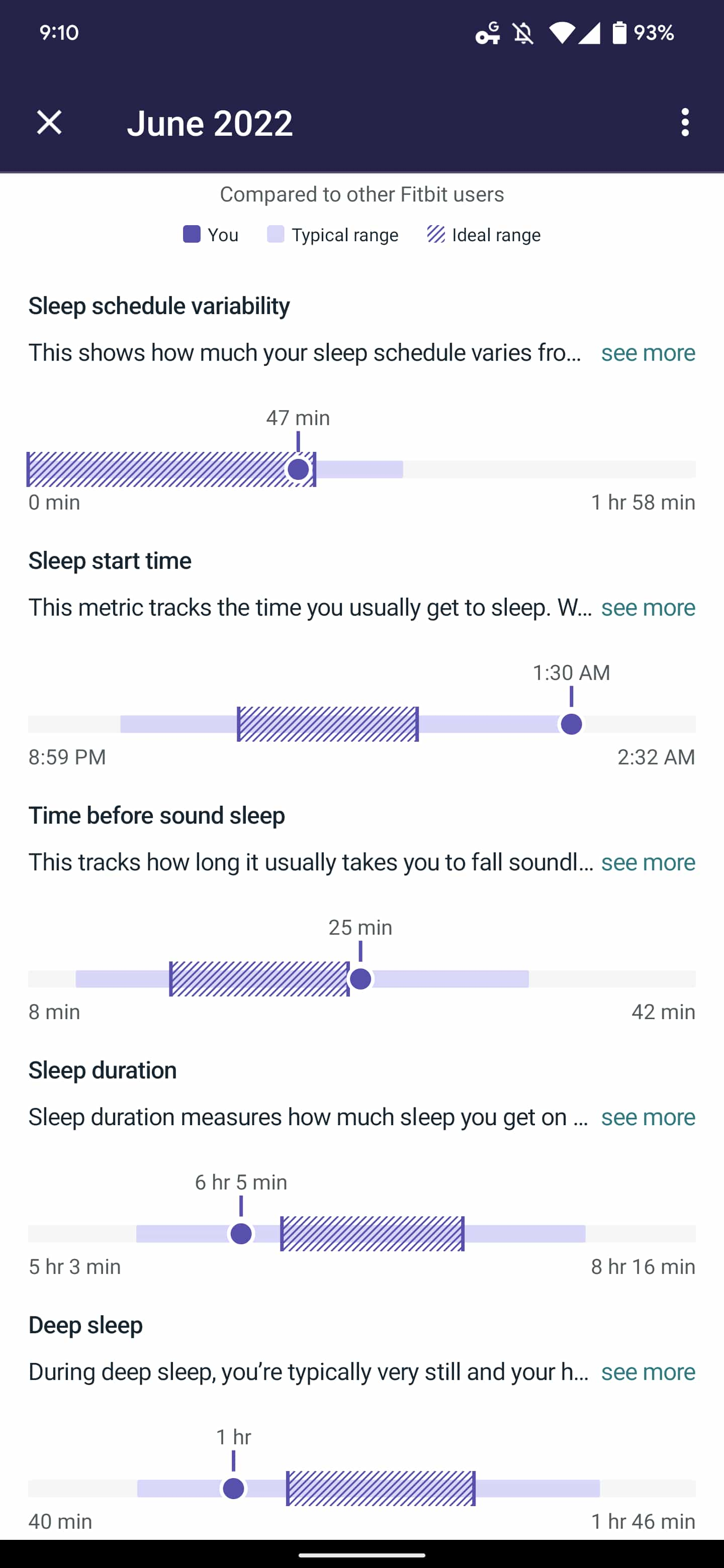
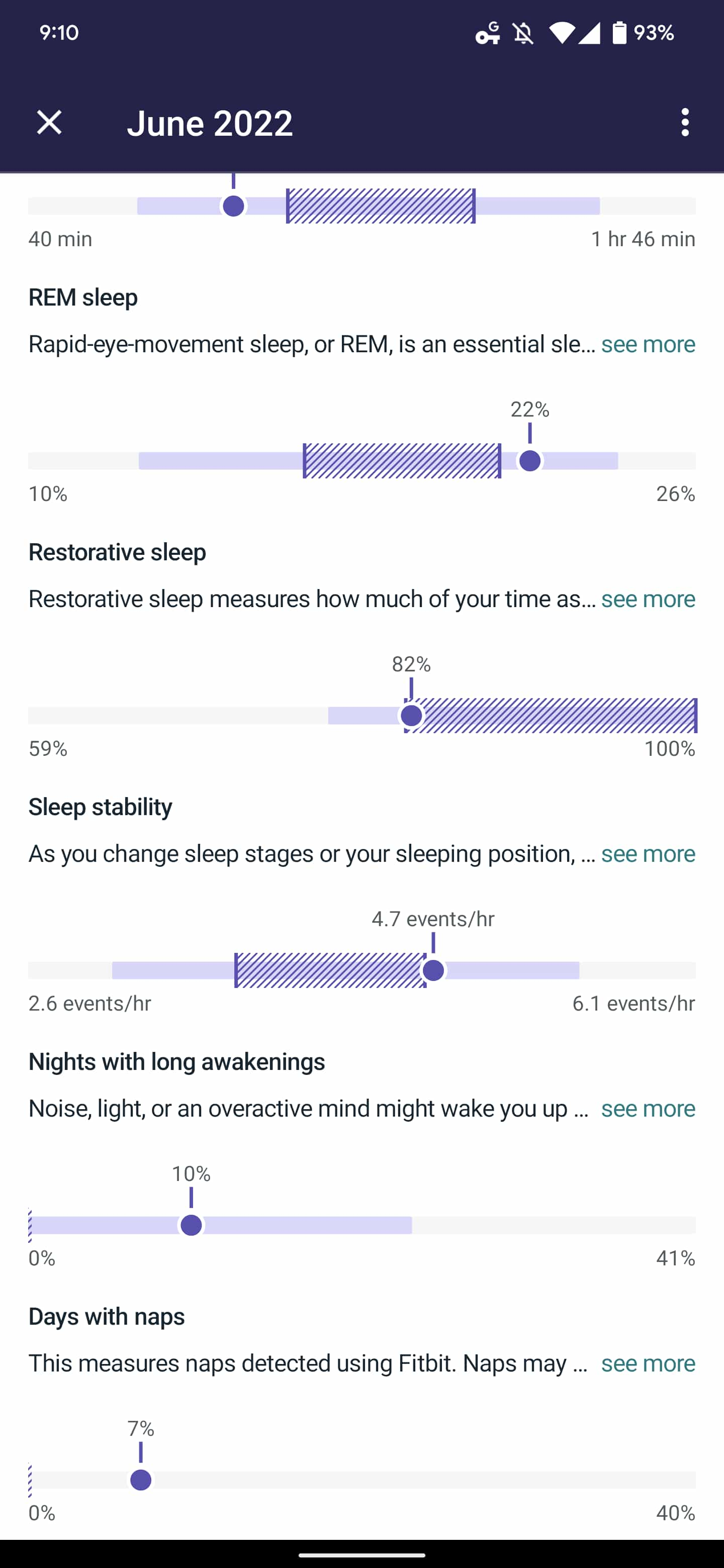
6. REM sleep
Rapid-eye-movement sleep, or REM, is an essential sleep stage. You’re likely to have vivid dreams during REM, as your brain is believed to be working hard on complex problems and processing emotions. When you have a lot on your mind, you might find yourself spending too much time in REM sleep.
7. Restorative sleep
Restorative sleep measures how much of your time asleep is spent with your heart rate lower than your usual resting rate. Many aspects of restful and restorative sleep are associated with a lower heart rate.
8. Sleep stability
As you change sleep stages or your sleeping position, your brain often wakes up for a moment, but it’s usually so brief you don’t notice. Stability tracks how often this happens. If you notice changes in your sleep stability, it might be time to look into your sleep environment.
9. Nights with long awakenings
Noise, light, or an overactive mind might wake you up and keep you up for a while. Most people have occasional long awakenings, but if you notice them becoming more common, it’s a good idea to look into the cause.
10. Days with naps
This measures naps detected using Fitbit. Naps may be necessary after a bad night’s sleep and can help you feel more refreshed. But if you find you’re napping often, it could be a sign of other factors affecting your long-term sleep
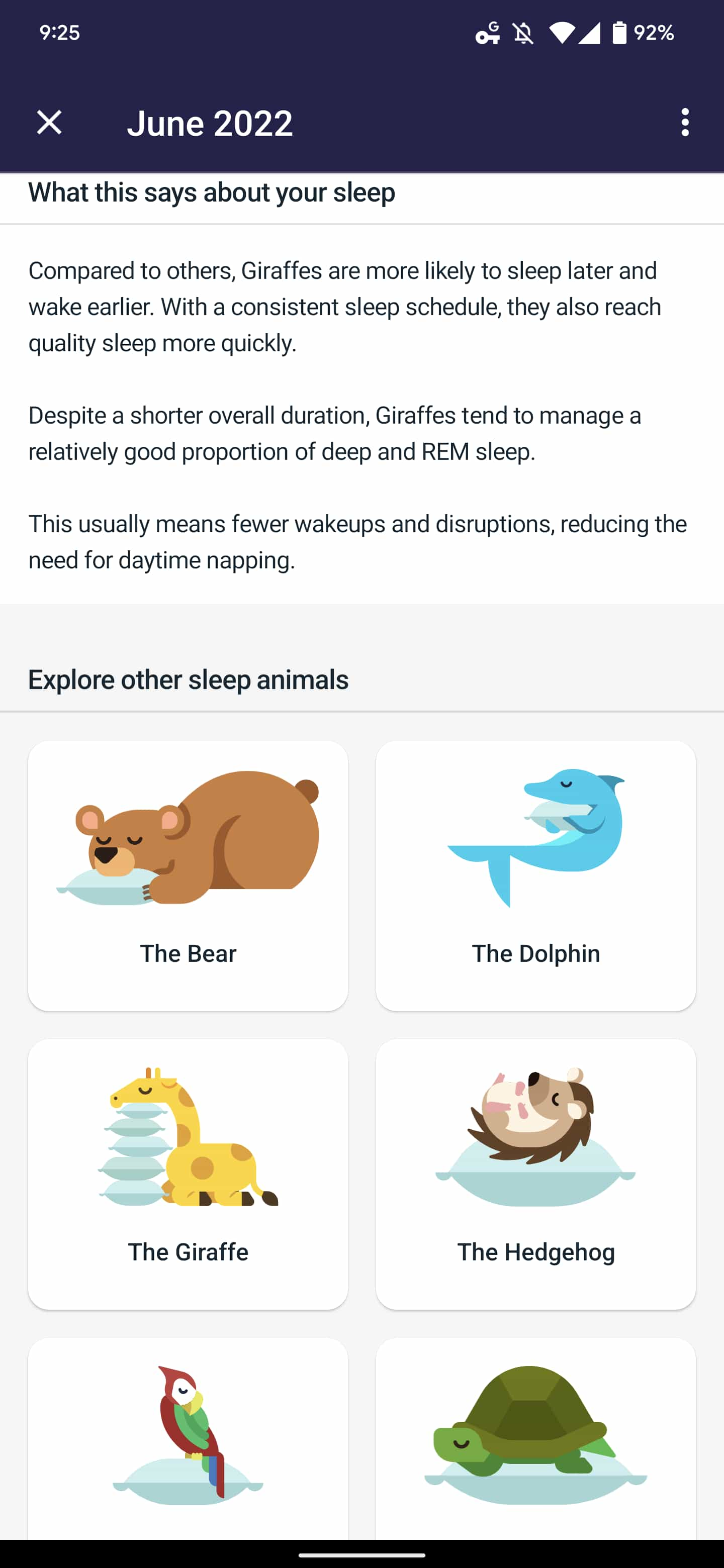
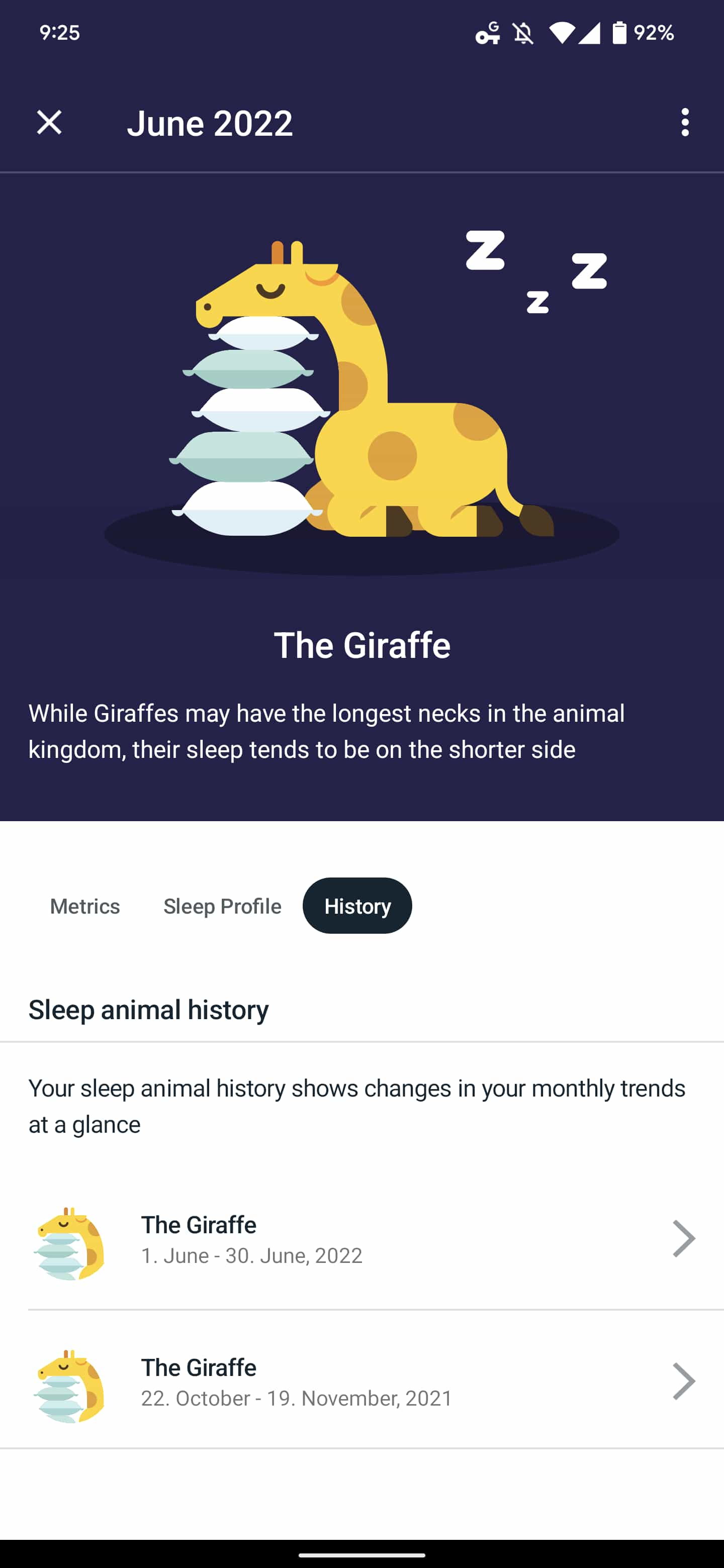
Fitbit then uses these 10 stats to assign you a Sleep Profile/animal. There are six choices:
- Giraffe: Your sleep tends to be shorter, and you are more likely to sleep later and wake up earlier. You have a relatively good proportion of deep and REM sleep despite a shorter overall duration.
- Bear: You tend to have a consistent sleep schedule, regularly falling asleep around the same time. You go to bed earlier than most, and you tend to reach a sound sleep quickly. Your sleep tends to be long and restful, with a relatively high proportion of deep and REM sleep.
- Dolphin: You tend to fall asleep later than most and sleep for less time overall – maybe due to an inconsistent sleep schedule. Compared to others, you tend to be a lighter sleeper and might take naps to catch up.
- Hedgehog: You usually fall asleep later and wake up earlier. You are a lighter sleeper – typically taking longer to reach sound sleep and may get less deep and REM.
- Parrot: You tend to keep a consistent bedtime and don’t sleep too early or late. You typically reach sound sleep quickly and usually get a good amount of sleep each night. You likely sleep deeply once you drift off but can be light on REM due to waking up briefly throughout the night.
- Tortoise: You tend to fall asleep at different times each night, but often earlier than most. Paired with slightly later average wake times, you tend to spend more time in bed overall but may find it takes longer to reach a sound sleep, impacting your lower-than-average deep and REM sleep.
FTC: We use income earning auto affiliate links. More.
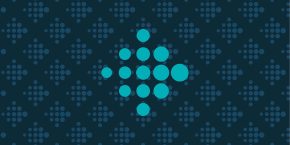
Comments